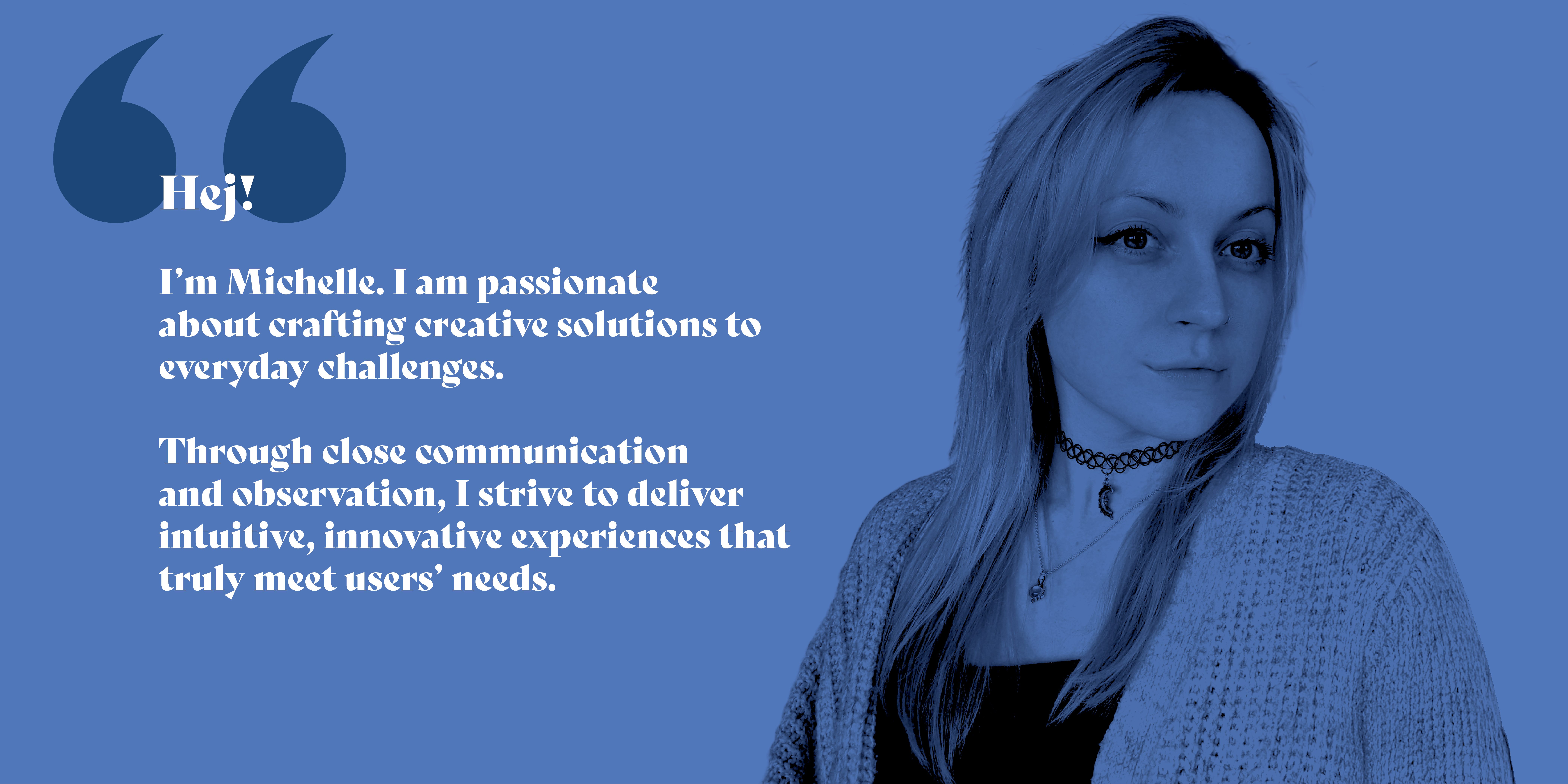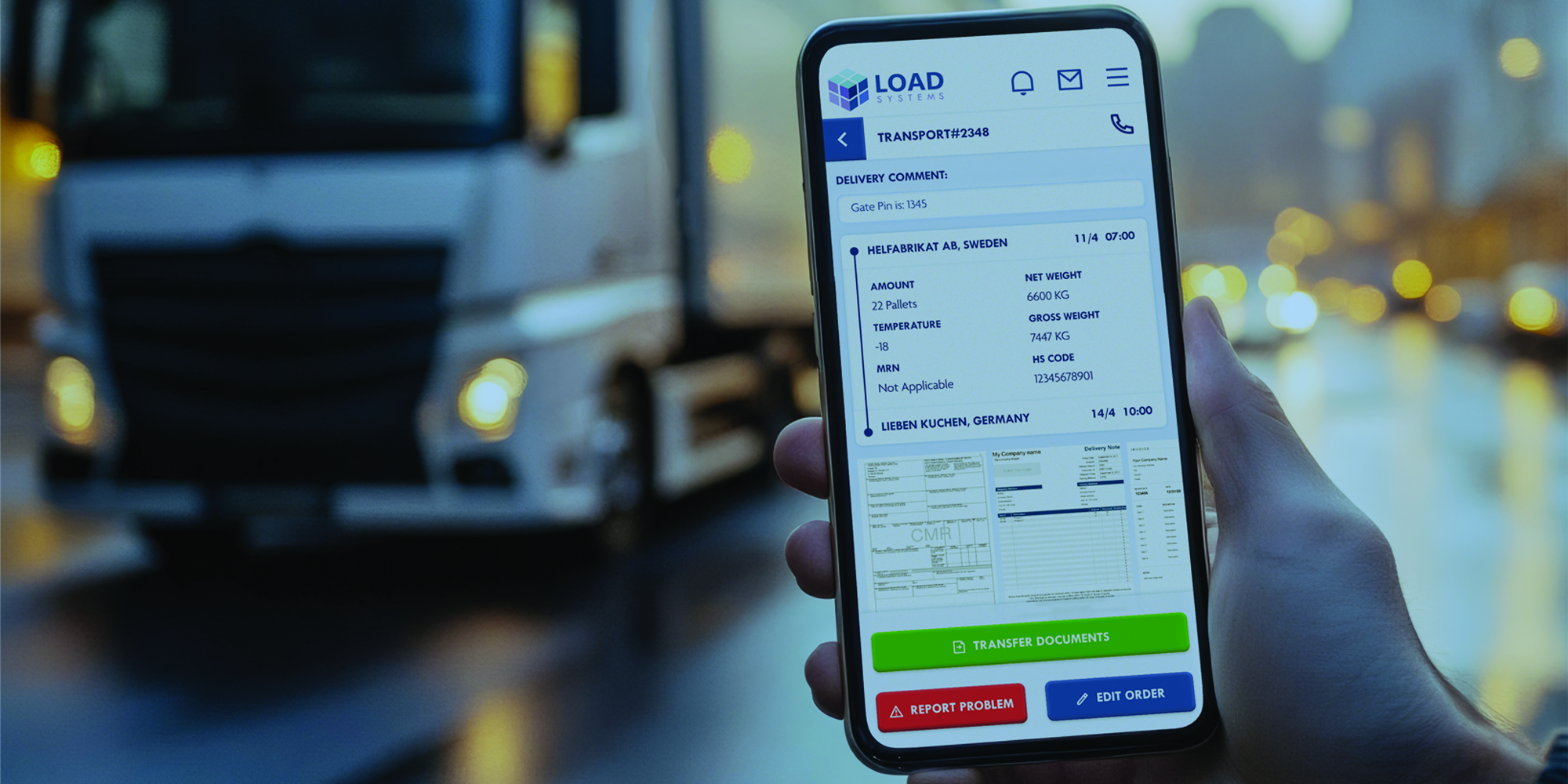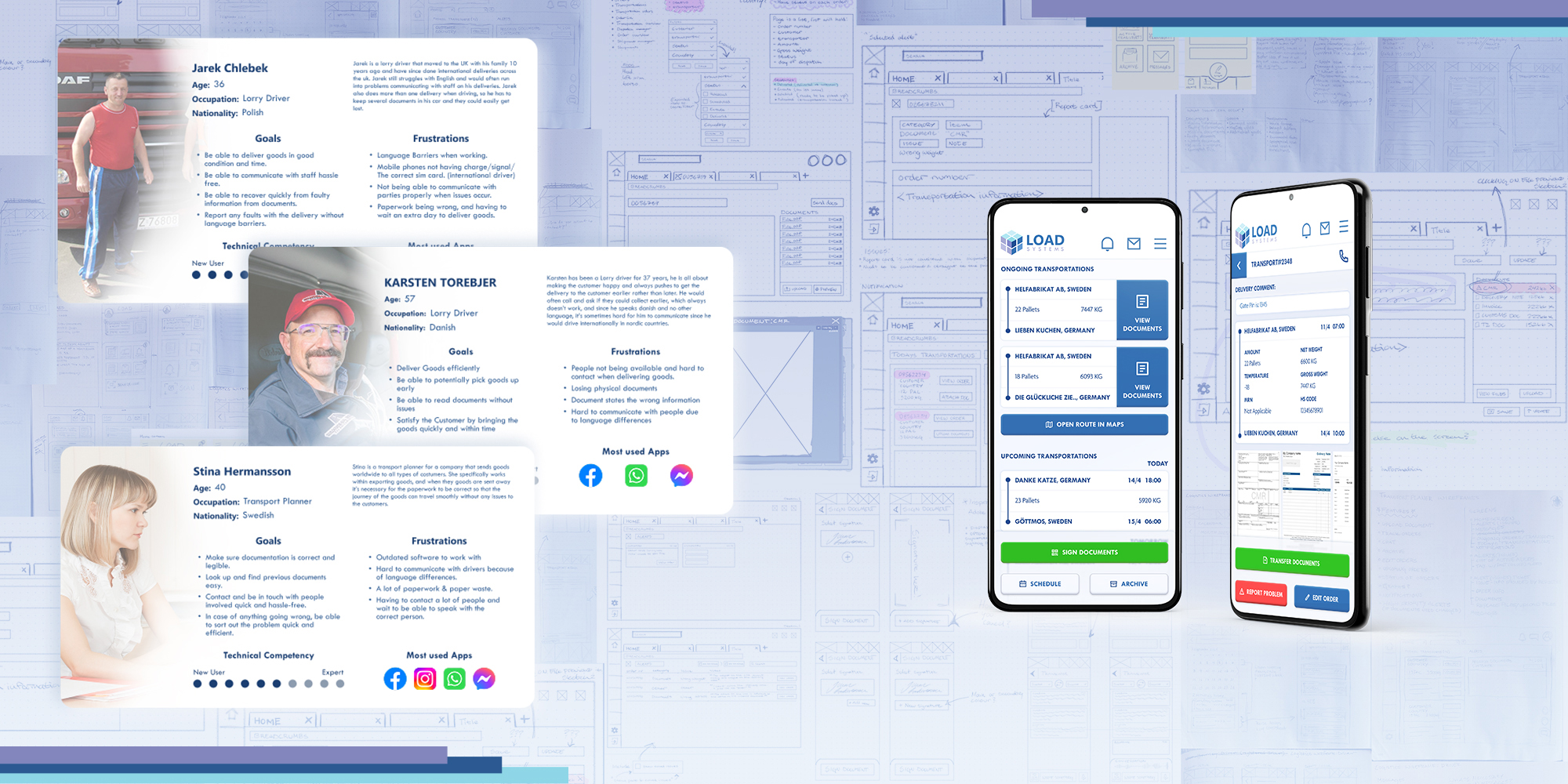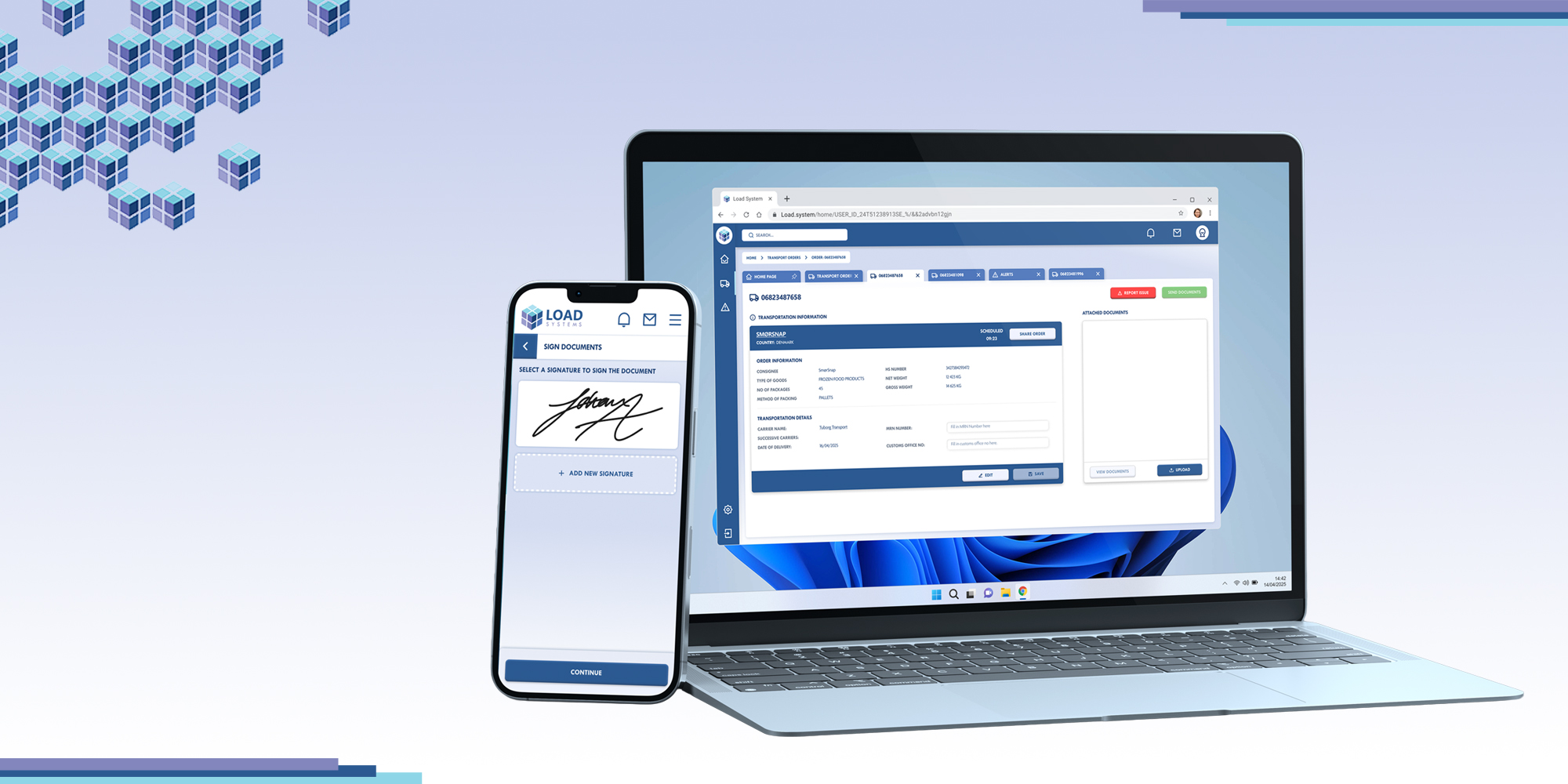

Hej!
I'm Michelle, a UI/UX designer Imported from Sweden with a passion for problem-solving.
I love using creativity in unconventional ways to find solutions inspired by the world around us, making everyday life easier, one step at a time.
For my Final Year Project, I focused on real challenges my co-workers and I faced during a seasonal job in my hometown. It reflects what I value in product design: understanding users, observing their needs first-hand, and creating solutions that improve working conditions.
By combining creativity, empathy, and direct user insight, I strive to design with purpose and make a real impact.

Logistic Assistant for Documentation (LOAD) is an integratable system designed for companies to efficiently manage transport documents. It enables users to upload, share, and archive documents on a centralized platform, providing access to drivers, receivers, and transport planners. Users can track order statuses, view essential shipping details, and receive notifications about important notes or potential issues related to shipments.
The primary goal of LOAD is to minimize paper waste in logistics, streamline workload, automate repetitive tasks, and enhance communication between all involved parties.

Creating LOAD started with a simple goal—solving real workplace challenges. To make sure the product was truly useful, I spent the summer of 2024 visiting a food factory in Sweden. There, I observed workers, conducted interviews, and gathered first-hand insights from lorry drivers, goods receivers, forklift operators, and transport planners.
Throughout the process, user feedback was at the center. I worked closely with user participating, refining features, adjusting functions, and making sure everything fit naturally into their workflow. The goal was to help, not disrupt, their routines.
To better understand logistics and supply chain applications, I researched existing products, watching public workshops that demonstrated the application and features. This helped me identify areas for improvement and refine my products capabilities.
Designing for lorry drivers was a unique challenge, as their average age is around 50 and their familiarity with technology varies, based on age, nationality as well as what they do on their free time. To ensure ease of use, I made LOAD as intuitive as possible, taking inspiration from widely used apps, applied skeuomorphism and using clear, straightforward language to prevent confusion. This is to ensure that the journey for different tasks are as straight forward as it could possibly be.
The transport journey, however, was easier to handle, since I worked as a transport planner for a few months, and was in touch with several users with that role. Their technological understanding was more advanced, based on interviews, observations and research.

I'm really proud of the final product. It exceeded my expectations, received great feedback, and even opened the door to turning it into a fully functional mock-up with real data integration.
During development, the EU introduced a new law, set to take full effect in 2027, requiring all transport documentation in Europe to be fully digital. This change will reduce paper waste and improve document tracking, making LOAD even more relevant.
Logistics comes with daily challenges—missing delivery notes delaying shipments, incorrect addresses causing confusion, and communication barriers slowing things down. LOAD helps solve these problems by providing instant updates, reducing human errors, and ensuring smooth operations.
This project was exciting, challenging, and deeply rewarding. Working directly with users gave me valuable insight into their needs, improving both my design skills and my understanding of accessibility in work environments.